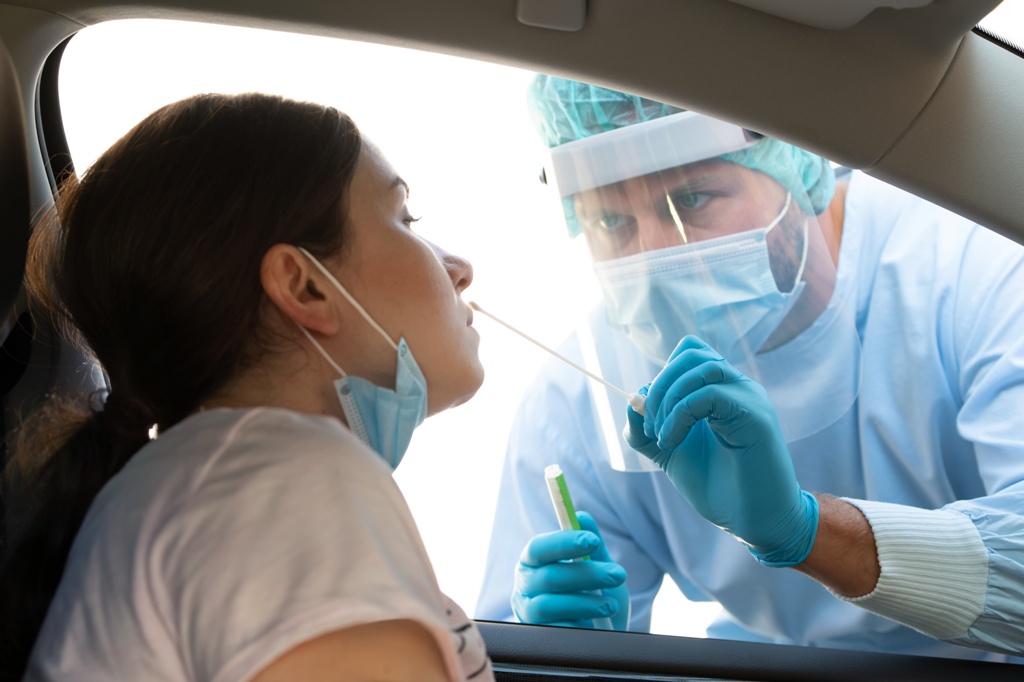
Why They Started Doing Drive Thru COVID Test Sites
As the world continues its battle against the COVID-19 pandemic, one of the key concerns in controlling the pandemic has been the lack of testing facilities. At a drive-thru COVID center, a passenger goes through the entire process of testing within a few minutes without having to step out of the car.
An increased number of tests meant more patients are being screened. With a rise in the number of COVID cases, governments and health providers are opting for a drive-thru testing to protect patients from contracting the virus.
Here’s why:
Reasons For Doing COVID Drive-Thru Tests
Aside from being a response to the increase of COVID-19 patients in different parts of the globe, there are many other reasons government and health providers are utilizing semi-permanent event structures and other large structures into COVID test sites, namely:
1. Increases The Number Of Testing Sites
One of the key reasons why many countries have introduced drive-thru COVID testing sites is to increase the number of tests and reduce the pressure on emergency rooms. To do this, they required a method of testing that could accommodate a high volume of patients yet minimize the risk for spreading the disease. Thus, a drive-thru testing method was an ideal fit. This method was pioneered by South Korea and is being used around the world today.
The test comprises of registration, symptom check, swab sampling, and car disinfection. The entire process lasts for just 10 minutes, whereas a traditional testing process would take at least 30 minutes. The results of the test are delivered via text messages.
2. Slows Down The Spread Of The Disease
Drive-thru testing stations set up by South Korea centered on rapid and widespread testing to slow down the spread of the disease. Their idea was inspired by the drive-thru takeaways of food joints like McDonald’s.
Drive through tests are more convenient and safer than lab tests. Since drive-thru tests ensure minimum exposure for patients as well as health workers, they reduce the risk of spreading the infection.
3. Offers Convenience To Families
COVID test sites existed months after the virus spread. However, these testing facilities can only accommodate a limited amount of people at a time, which can be very inconvenient for large families who want to get tested. The bigger your family is, the longer you’ll have to wait in line along with the other patients—something that can increase your family’s risk of being infected by the virus.
Drive-thru COVID tests sites are a godsend for large families because everyone can get tested in one occasion. Every member of the family will just have to sit in the car, drive through a site, and wait until technicians will conduct their tests. With drive-thru tests, families don’t even have to step out of their cars, making this testing setup more convenient.

4. Guarantees Social Distancing
Medical professionals and government agencies recommend individuals to maintain a safe distance between yourself and other people to prevent the transmission of the virus. Ideally, you should stay at least 6 feet away from other people regardless if you’re in an indoor or outdoor environment.
Although the first testing centers have strict guidelines on social distancing, this isn’t always met. Testing centers that require people to stay in the area are usually cramped, and staying there for long periods will only increase their susceptibility to getting or spreading the virus.
Unlike the first testing centers, drive-thru COVID tests sites are safer because their setup guarantees social distancing. Because individuals are required to stay in their cars, they won’t have any chance of mingling with other people who might be carriers of the virus.
5. Infectious Patients Don’t Have To Wait Together In An Enclosed Building
Natural ventilation of drive-thru testing centers is another advantage they have over conventional testing labs because existing screening centers take about 30 minutes to achieve airborne contamination removal up to 99%. However, drive-thru centers don’t require ventilation for screening as the patients remain inside their cars.
6. Improves The Efficiency Of The Testing Model
One of the key advantages of this model is its easy scalability. With a drive-thru testing center, governments have been able to considerably increase their testing capacity. Drive-thru testing centers allow governments to test more people in a day without the need to compromise their safety as they’re not in contact with other people who might be positive of the virus.
Conclusion
Drive-thru Coronavirus testing can help you determine whether you have the virus or not within minutes. However, before you proceed with any testing, make sure you have your doctor’s permission. Because drive-thru testing is safe and convenient, this model has been successful throughout the world in increasing testing capacity and minimizing the risk for infection.
Drive-thru Coronavirus testing should only be performed if you are experiencing symptoms of COVID-19 like a fever, dry cough, vomiting, diarrhea, or loss of appetite.




